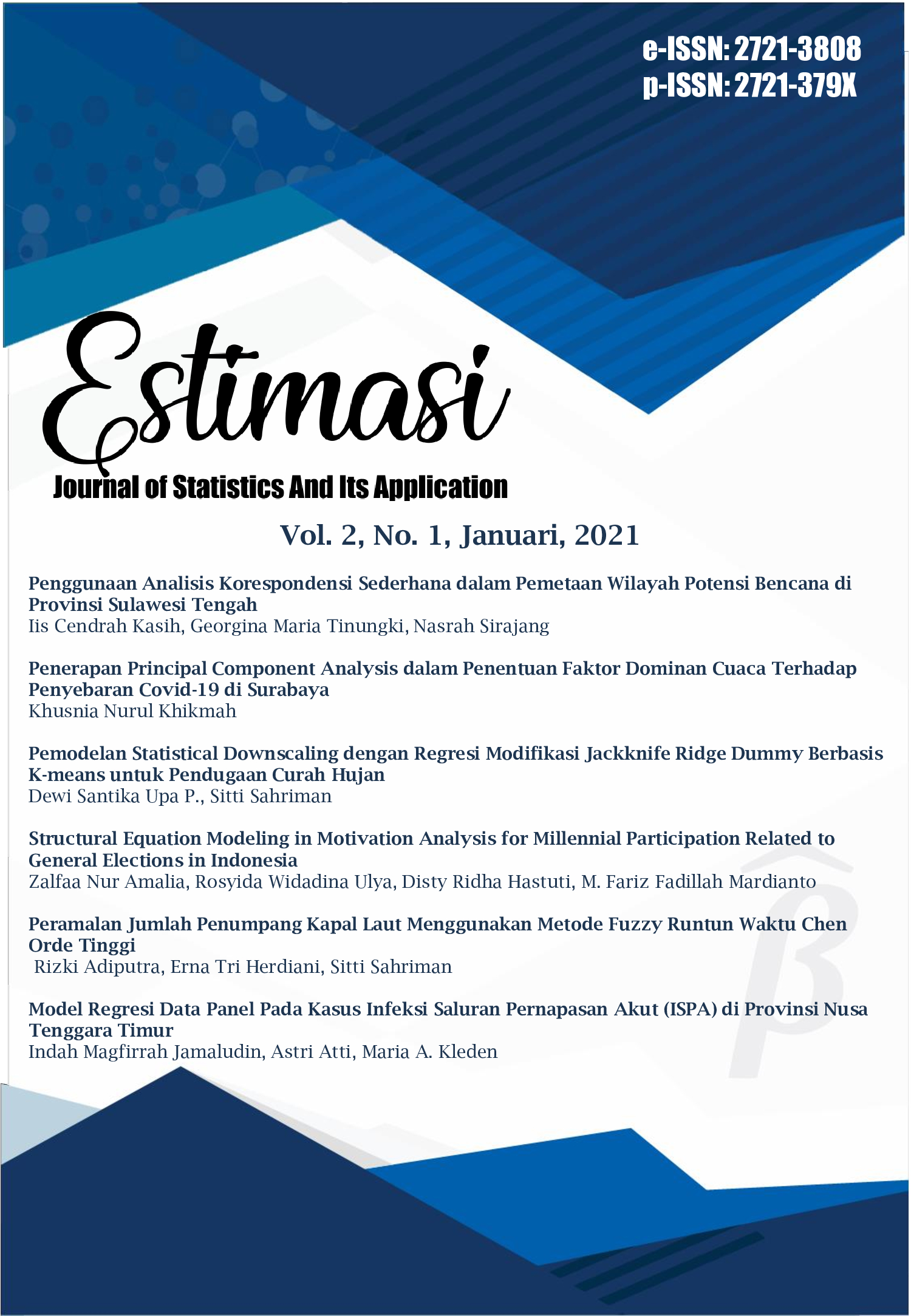Penggunaan Analisis Korespondensi Sederhana dalam Pemetaan Wilayah Potensi Bencana di Provinsi Sulawesi Tengah
DOI:
https://doi.org/10.20956/ejsa.v2i1.10234Keywords:
Central Sulawesi, Natural Disaster, Row of Profile, Simple Correspondence Analysis.Abstract
Disaster cases need to be analyzed considering that when a disaster occurs it will have an extraordinary impact. The statistical method that can be used to study disaster cases is a simple correspondence analysis. This study aims to map areas with the potential for natural disasters in the province of Central Sulawesi. So, in the analysis, regions are grouped according to row profile values that are greater than the average. The result of simple correspondence analysis obtained flood disaster has the potential to occur in Banggai, Morowali, Donggala, Buol, Parigi Moutong, Tojo Una-una, Sigi, and North Morowali. While the dominant tornado disaster occurred in Banggai Kepulauan, Banggai, Poso, Toli-toli, Parigi Moutong and Sigi. For regional landslides with potential Banggai Islands, Donggala, Toli-toli, Parigi Moutong, and Sigi. Then Banggai Islands and the City of Palu are the dominant regions for earthquake disasters. The results of the grouping can be the basis of government and community focus in tackling the dominant disasters occurring in their respective regions so as to minimize the impact when natural disasters occur.
References
Setiawan, I. 2009. Pemanfaatan Sistem Informasi Geografis untuk Zonasi Tingkat Kerawanan Bencana Letusan Gunung Api Tangkubanparahu. Skripsi. Buana Nusantara. Bandung.
Mattjik, Sumertajaya, A. A., & Made, I. 2011. Sidik Peubah Ganda dengan Menggunakan SAS. Bogor: Institut Pertanian Bogor.
Ghozali, I. 2011. Apilkasi Analisis Multivariat dengan Program IBM SPSS 19. Semarang: Universitas Diponegoro.
David, W. & Djamaris, A. 2018. Metode Statistik untuk Ilmu dan Teknologi Pangan. Jakarta Selatan: Universitas Bakrie.
Pakpahan, S. & Ngadmanto, D. 2015. Analisis Kegempaan di Zona Sesar Palu Koro, Sulawesi Tengah. Journal of Environment and Geological Hazards. 6. 253-264.
Greenacre, M. J. 1984. Theory and Applications of Correspondence Analysis. London: Academic Press.
Fekedulegn, B. D., Colbert, J. J., Hicks, R. R. Jr., & Schuckers, M. E. 2002. Coping with Multicollinearity: An Example on Application of Principal Components Regression in Dendroecology. United States Department of Agriculture: Newton Square.
Downloads
Published
Versions
Issue
Section
License
Copyright
It is the author's responsibility to ensure that his or her submitted work does not infringe any existing copyright. Authors should obtain permission to reproduce or adapt copyrighted material and provide evidence of approval upon submitting the final version of a manuscript.


